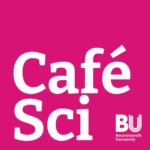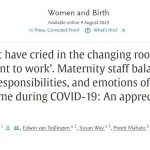 Here: CEMP Cluster bulletin and agenda 2.5.13 is the updated bulletin and the agenda for the next CEMP Research & Innovation cluster meeting.
Here: CEMP Cluster bulletin and agenda 2.5.13 is the updated bulletin and the agenda for the next CEMP Research & Innovation cluster meeting.
The meeting is on Thursday 2nd May in the CEMP office, with the following timings:
‘Think-tank’ discussion of reading – 9.30 – 10.15
The reading for this has been provided by Michelle Cannon and is here:
design_educ_innovation_ecotones_pendleton_jullian[2]
Funding and projects review – 10.15 – 11.30
As always, Media School colleagues are very welcome indeed to join us for either or both of the above.
As always, people attending should review the bulletin before the meeting so we can spend time only discussing items people are interested in pursuing and should bring a laptop or tablet to access the bulletin electronically during the meeting.
For the ‘think-tank’ discussion, Michelle has offered the following information and suggested extract:
Pendleton-Jullian elaborates a metaphor that might be useful for visualising the terrain of media education. Scientifically speaking, the ecotone is an ecological zone where 2 unique ecosystems are juxtaposed; more precisely, it describes the overlap, a zone of transition and tension at the edges of 2 distinct ecologies eg. where the land meets water in an estuarine tidal area. Natural life forms in this changeable environment are highly biodiverse, adaptable and used to disturbance. She contrasts this hyper edge-activity with the relatively slower core activities of life forms on either side of the land/sea divide but recognises the interdependence of all three zones.
I suggest a reading of pages 25 – 45 (this doesn’t equate to 20 pages of pure text) where she details 2 intersecting continua: the vertical axis corresponding to modes of learning with Accreditation (or rather Assessment) at one end and Experimentation at the other; and on the horizontal axis – 20th Century Learning at one end and 21st Century Knowledge Creation on the other (see p. 32). Two lines are then drawn to demarcate an interstitial zone within the 2nd and 3rd quadrant that equates to the fertile ecotone. Relating this to practical media education, I’m interested in the strengths and limitations of this analogy and its capacity to frame the “seeding of a culture of innovation” and to envision the rhizomic (rhizomatic?) relations/mechanisms/”digital corridors”/elastic spin-offs that populate this dynamic space.
 CEMP Research & Innovation Cluster: New Bulletin & Agenda
CEMP Research & Innovation Cluster: New Bulletin & Agenda










 Café Scientifique Tuesday 4 June 2024 – How can we become more resilient in the face of multiple risks and hazards?
Café Scientifique Tuesday 4 June 2024 – How can we become more resilient in the face of multiple risks and hazards? Dr Rachel Arnold on Appreciative Inquiry
Dr Rachel Arnold on Appreciative Inquiry MSCA Postdoctoral Fellowships 2024
MSCA Postdoctoral Fellowships 2024 Horizon Europe News – December 2023
Horizon Europe News – December 2023